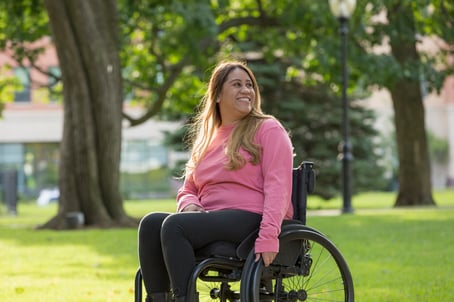Truths in Paralysis – For Now
Join Our Movement
What started as an idea has become a national movement. With your support, we can influence policy and inspire lasting change.
Become an Advocate
Truth 3. The body should be provided with movement.
Just because you may not sense the need to move the body that is affected by paralysis does not mean that it does not need it. Gently moving the body provides input to the areas where it is affected by paralysis and will help keep opposing muscles in alignment avoiding contractures and even misshaping of the body as with scoliosis. Movement can enhance breathing, bowel, bladder, skin, and other body functions. Mental wellness is perceived as better when the body has movement.
In the future, with the advancement of therapeutic options available to everyone, bladder and bowel care will become less challenging. Skin integrity will improve. Movement will increase. Caring for your body now will make this transition easier as your general health improves.
It has been a very long time waiting for many of the new healthcare treatments to become available to everyone. However, this year, we should see the opportunity for you to have a choice of trying the new devices.
For more information regarding bladder, click here.
For more information regarding bowel, click here.
For more information regarding skin care, click here.
